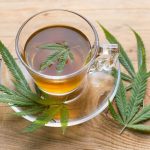Table of Contents
Moringa didn’t come to play. This skinny little tree, often called the “miracle tree,” strolls into the wellness world like it owns the place — wearing shades, sipping coconut water, and flexing its vitamin-packed muscles. For a plant that looks suspiciously like something your grandma would boil and make you drink “for strength,” moringa’s having a serious moment.
Let’s peel back the leafy layers of this green legend and find out why people are sprinkling it in smoothies, rubbing it on their skin, and writing songs about it (okay, maybe not yet…).
So… What Is Moringa, Anyway?
Moringa oleifera sounds like the name of a Roman goddess, but it’s actually a fast-growing tree native to parts of Africa and Asia. It’s sometimes called the drumstick tree — thanks to its long, lanky seed pods — or the horseradish tree, because its roots have a bit of a spicy attitude. You might also hear it referred to as “that powder my roommate swears makes her glow.”
Every part of the moringa tree — the leaves, seeds, pods, bark, roots, even the flowers — is good for something. It’s basically the overachiever of the botanical world. If moringa were a person, it would have a LinkedIn profile so intimidating that other plants would delete their accounts.
Nutrition Goals: Moringa’s Résumé is Ridiculous
Let’s talk about why moringa is the teacher’s pet of the plant kingdom. It has more vitamin C than oranges, more potassium than bananas, more protein than yogurt, and more calcium than milk. You almost expect it to walk in wearing a medal for “Most Likely to Be a Superfood.”
It’s also rich in iron, magnesium, and antioxidants. These antioxidants are like little bouncers for your body, kicking out free radicals, boosting your immune system, and possibly even helping you remember where you left your keys (no promises, though).

Basically, moringa is what spinach wishes it could be after three cups of coffee and a motivational podcast.








